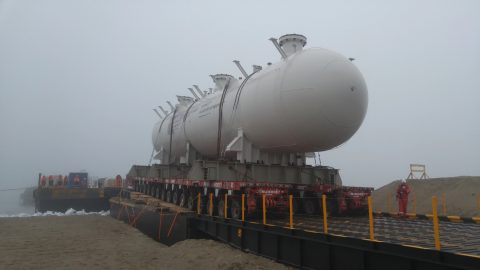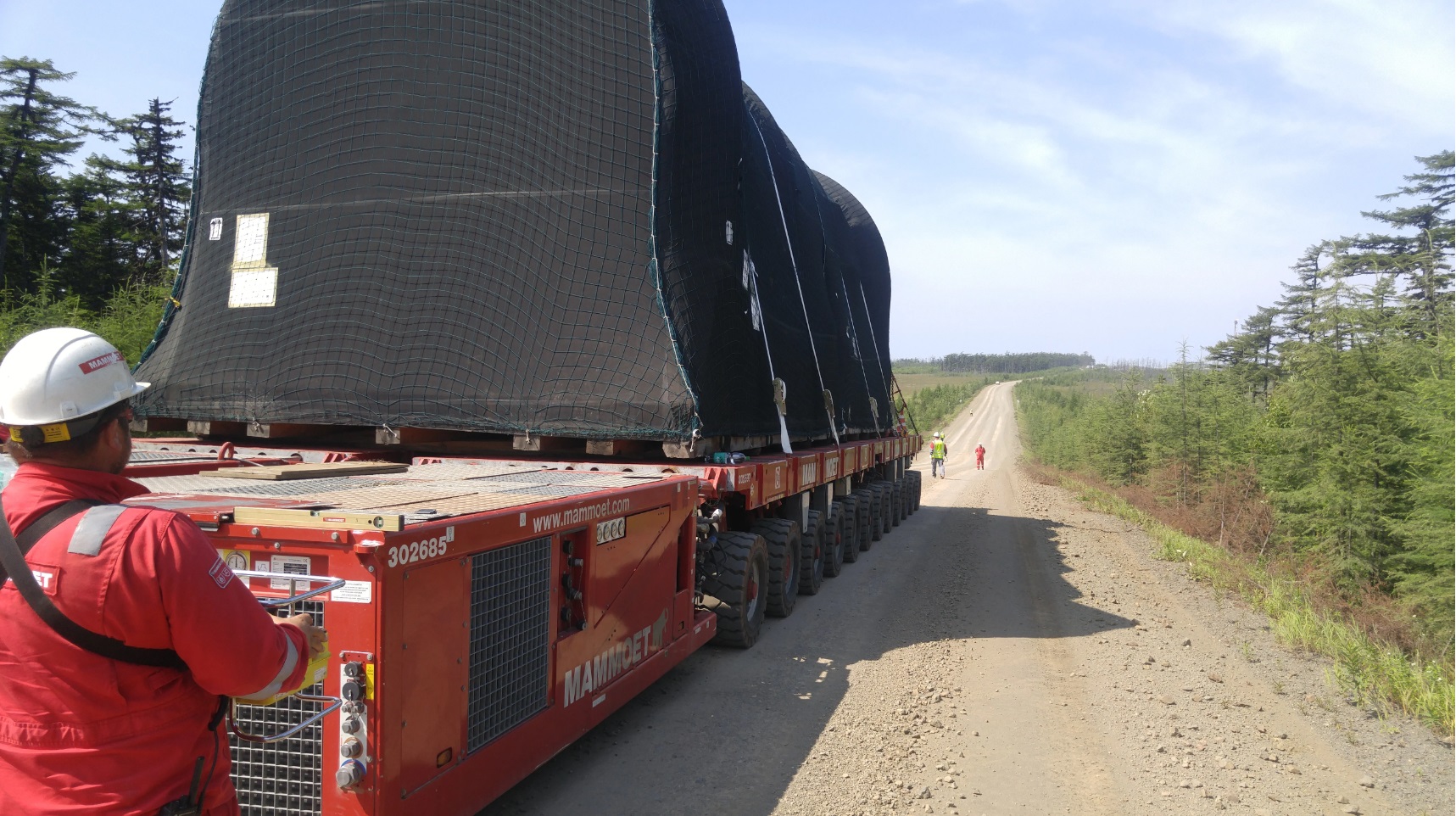
Mammoet creates beach landing to deliver in Sakhalin
Mammoet created a custom beach landing solution to deliver 22 pieces of equipment to the onshore processing facility compression site of the Sakhalin-2 project in Russia. In addition to the lack of infrastructure, the Dutch heavy-lift giant had to face the harsh conditions of the Sea of Okhotsk.
The Sakhalin 2 project is an oil and gas development project on the Russian island of Sakhalin immediately above Japan. It is operated by Gazprom, Shell, Mitsui and Mitsubishi and includes a liquefaction unit to produce LNG. The aim is to turn it into a premier energy source for the Asia-Pacific region.
The Sakhalin-2 onshore processing facility is located on the east coast of Sakhalin Island. The only access for large equipment delivery is via transportation barges passing through the volatile Sea of Okhotsk, which is known for its high winds and stormy conditions, Mammoet says in a release.
The island is primarily home to abundant wildlife and lacks sufficient infrastructure to complete projects of this scale. The biggest challenge was the lack of a sheltered port capable of withstanding the weight of the gas production equipment. As a solution, Mammoet created three-stage temporary beach landing.
Temporary beach landing
First, each of the 22 items were individually transferred from the transportation barge to an intermediate barge that was small enough to dock. Then they were transferred to the temporary beach landing facility and finally to the beach itself.
Because the existing docking bay couldn’t withstand the weight of a 500-tonne inlet separator, Mammoet built a 200-metre temporary beach landing facility, which was dismantled again after the execution of the work to restore the beach to its initial condition.
The temporary facility meant that Mammoet could transport the equipment off the barge using SPMTs. This transfer was challenging, especially for the items on the single trailers, because it was executed on open sea, the company explains. Uncertain sea conditions directly affected the behaviour of the intermediate barge and therefore Mammoet’s engineers needed to make precise calculations for every possible situation so that the transfer could take place.
“The beach landing had several special requirements. It needed to be strong enough to carry the weight of the load, with an added focus on stability to counteract the extreme wind and sea conditions. The nearest settlement was over 100 kilometres away, so the smallest details required extensive preparation”, says Mammoet’s project manager Dmitry Matsiborko.
Once all the equipment had landed safely ashore, the third and final stage was the 7-kilometre journey from the beach to the site.

You just read one of our premium articles free of charge
Want full access? Take advantage of our exclusive offer




